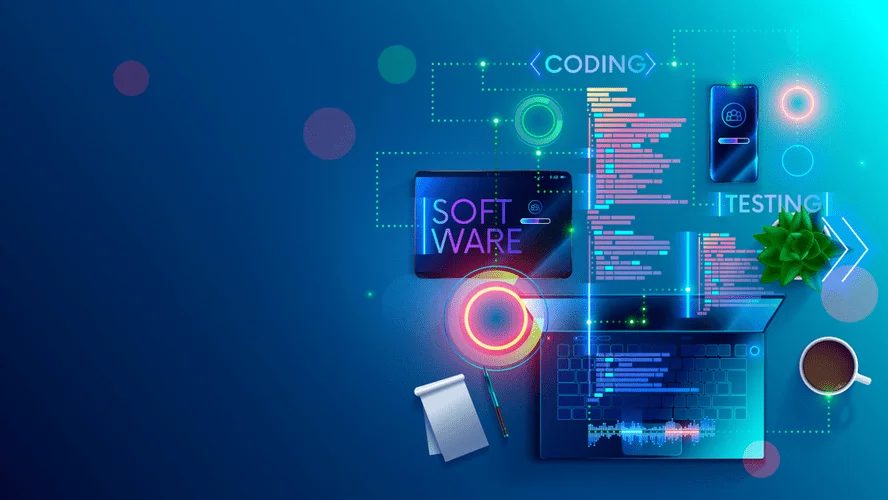The lifecycle begins with the preliminary planning and evaluation of the system’s necessities, adopted by the design, implementation, testing, and maintenance of the appliance. Understanding these levels is crucial for profitable software growth. Next, let’s discover various methodologies to the system improvement life cycle. The scope and objectives of the system development life cycle form the inspiration ai trust of its effectiveness.
How Does Sdlc Differ From Stlc And Devops?

The group can overly focus on tasks of low importance or not adapt to fixed modifications, leading to inefficient project useful resource spending. The group can reallocate resources shortly and change system development life cycle process refocus priorities when enterprise needs change. Operations specialists add the software to a monitoring system and arrange an incident management system to receive immediate notifications if the software program loses its efficiency. Deployment automation allows the staff to provide updates and patches shortly, which may be crucial when the team needs to ship a bug repair or close a security vulnerability.
Comparison With Other Lifecycle Models

For organizations seeking to implement these methodologies or enhance their current methods, understanding the nuances of SDLC is essential. For expert guidance on adopting SDLC frameworks that align with specific enterprise wants, feel free to contact us. This ordered list clearly reveals the progression of the system development life cycle phases, emphasizing the significance of following each step sequentially. Each stage builds upon the earlier one, creating a cohesive development course of.
The Way To Create A Successful Mvp: A Blueprint For Startups
The System Development Life Cycle (SDLC) supplies a well-structured framework that offers an concept, of the method to construct a system. It consists of steps as follows – Plan, Analyze, Design, Develop, Test, Implement and Maintain. Design paperwork usually embody useful hierarchy diagrams, display layouts, enterprise rules, course of diagrams, pseudo-code, and a whole knowledge model with an information dictionary. These components describe the system in enough detail that developers and engineers can develop and ship the system with minimal further enter. System assessments are performed in order to correct deficiencies and adapt the system for continued enchancment.
For projects with clear necessities where testing is essential, it can be useful. The last however not least necessary stage of the SDLC process is the maintenance stage, where the software program is already being utilized by end-users. It is often incorrectly equated with the precise improvement course of however is quite an intensive prototyping stage.
During the fifth part the system is installed within the production setting. Many organisations choose to have the system examined elsewhere first, in a particular testing surroundings. Additionally, this framework ensures that the system is developed throughout the given time constraints and price range.
Each firm may have their own outlined best practices for the various levels of growth. For example, testing might contain an outlined variety of finish customers and use case eventualities to find a way to be deemed profitable, and maintenance might embrace quarterly, obligatory system upgrades. In the evaluation phase, the focus shifts to understanding person wants and system necessities. Tech fanatics embark on an in depth exploration, gathering insights to shape the event course of. This stage requires a strong attention to element and a commitment to capturing user expectations. The System Development Life Cycle is a structured course of or framework used to guide the event of an info system.
With the tech resolution polished and refined, the deployment part units the stage for the system’s introduction to the world. We meticulously install the software program, distribute it, and practice the customers to ensure a seamless launch into the digital landscape. Executing all seven phases of the System Development Life Cycle is essential to ensure the success of your project within the realm of software growth. SDLC provides a number of benefits to improvement teams that implement it correctly. One of the upsides to this mannequin is that builders can create a working version of the project comparatively early in their growth life cycle, so implementing the modifications is usually cheaper. Perhaps most importantly, the starting stage units the project schedule, which may be of key significance if growth is for a business product that must be sent to market by a certain time.
- The subsequent stage of a system growth project is design and prototyping.
- The way ahead for SDLC lies in harmonizing traditional methodologies with these progressive technologies, making certain that the life cycle focuses on delivering even greater worth to end-users.
- The structure of the SDLC helps streamline initiatives and get rid of guesswork.
- Developers will choose the best programming code to use based mostly on the project specs and necessities.
This mannequin is all about effectivity and hitting necessary short-term targets, iterating on the process after each step to cut out bloat. When a software program product is finely tuned and all known bugs have been fastened, then it can be deployed to the manufacturing environment the place customers can access it. The objective of this stage isn’t simply to get the software program within the hands of customers. The objective can also be to be positive that they perceive how to use it and that it might be deployed with minimal disruption to the consumer experience or workflow.
In this stage, the problem or ache the software targets is clearly outlined. First, developers and other staff members define goals for the system and draw a rough plan of how the system will work. Then, they may make use of predictive analysis and AI simulation instruments at this stage to check the early-stage validity of an concept. This analysis helps project managers build a picture of the long-term resources required to develop a solution, potential market uptake, and which obstacles would possibly come up.
In the analysis part, the group ensures that the system is totally functioning, meets the wants of all users, and cannot be copied. The staff will go forward with software deployment if and only if it satisfies these standards. The project’s stakeholders, together with consumers, salespeople, in-house material consultants, and outdoors developers, all provide enter all through the planning part.
This stage is critical because it lays the foundation for the entire improvement course of. It entails figuring out what must be carried out, how it goes to be done, who will do it, and when it goes to be accomplished. The development team works carefully with stakeholders to grasp their needs and expectations.
In order to understand the concept of system improvement life cycle, we should first outline a system. A system is any info technology component – hardware, software program, or a mix of the two. Each system goes through a improvement life cycle from initial planning via to disposition. Ultimately, any growth team in each the IT and different industries can benefit from implementing system growth life cycles into their initiatives. Use the above guide to identify which methodology you want to use along side your SDLC for one of the best outcomes.
This contains bug fixes, performance enhancements, safety patches, and responding to consumer suggestions. Proper upkeep ensures the system stays environment friendly, safe, and adaptable to future enterprise needs. The Implementation part involves deploying the developed system into a live surroundings. Key actions embrace system installation, migrating data, coaching customers, and configuring infrastructure.
Transform Your Business With AI Software Development Solutions https://www.globalcloudteam.com/ — be successful, be the first!
